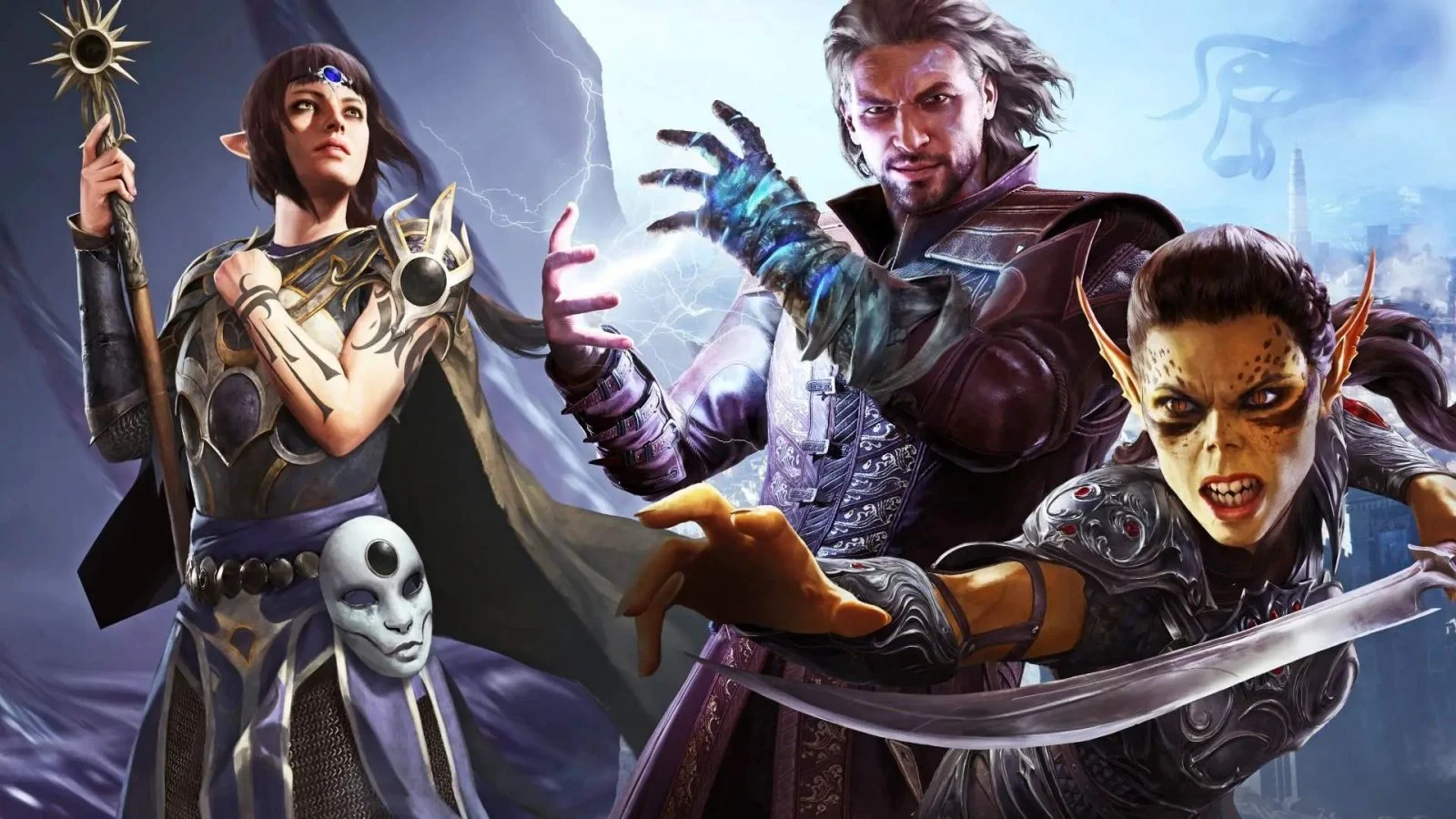With the imminent release of Baldur’s Gate 3 on PC, I thought I would gather the most important information worth knowing about Larian Studios’ colossal RPG. What it is, general information about the story (no spoilers), the combat system, character creation, and much more. Let’s start.
Table of Contents:
- The Baldur’s Gate Series
- Background Story
- Character Creation
- Baldur’s Gate 3 Gameplay
- How Long Does It Take to Complete?
- How Baldur’s Gate 3 Multiplayer Works
- PC Specs, Release Date & Platforms
The Baldur’s Gate Series
The Baldur’s Gate series is a renowned franchise of role-playing video games set in the Forgotten Realms campaign setting of the Dungeons & Dragons fantasy role-playing game. The series is named after the city of Baldur’s Gate, a significant location in the Forgotten Realms.
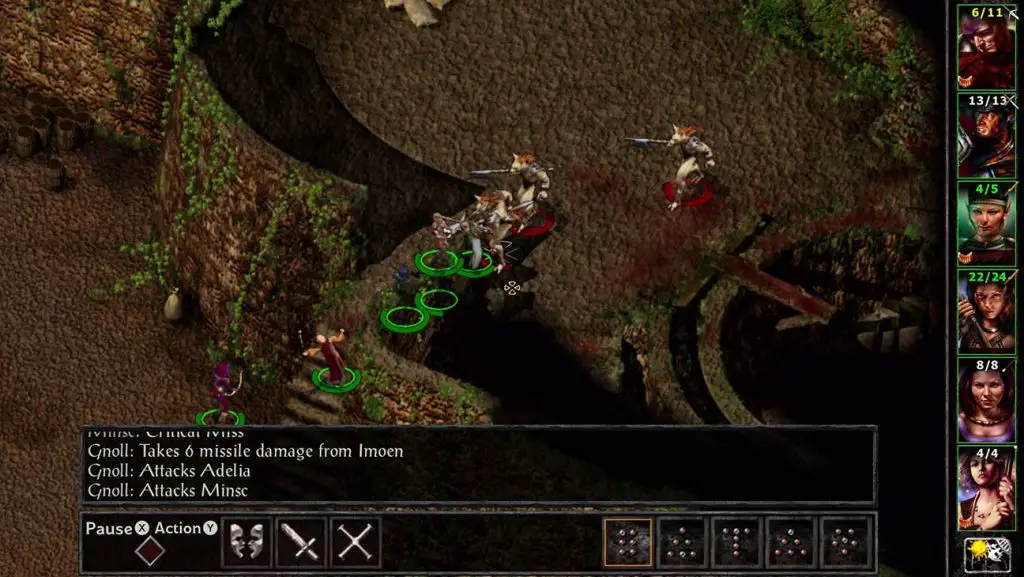
The first game, “Baldur’s Gate,” was released in 1998 and was lauded for its deep narrative, character development, and a real-time combat system that could be paused for strategic decisions.
Baldur’s Gate was followed by an expansion, Tales of the Sword Coast, in 1999, and a sequel, Baldur’s Gate II: Shadows of Amn, in 2000, along with its expansion, Throne of Bhaal in 2001. These games continued the story and expanded upon the gameplay mechanics of the original.
The series is known for its complex and engaging narrative, which follows the player’s character, an orphan raised in the monastery of Candlekeep, who discovers they are the offspring of the dead god of murder, Bhaal. The games involve a mix of exploration, puzzle-solving, combat, and interaction with a wide array of non-player characters (NPCs) who can join the player’s party and contribute their unique skills.
After a long hiatus, the series was revived with Baldur’s Gate: Enhanced Edition in 2012, which remastered the original game and its expansion. Baldur’s Gate II: Enhanced Edition followed in 2013. These editions included new content and improvements to the game’s graphics and gameplay.
October 2020 was the turn of Baldur’s Gate 3, developed and launched in Early Access by Larian Studios (Developers behind the Divinity Series). This third chapter is part of the deep lore rooted in the Dungeons & Dragons universe, which features a turn-based combat system. After a 3-year period of Early Access, the game is ready to shine in its 1.0 version.
Background Story
The game is set 100 years after the Baldur’s Gate 2 events and shortly after the tabletop D&D module called Descent into Avernus from 2019. The location is primarily The Sword Coast in the fantasy world of Faerûn, which is part of the Forgotten Realms setting. Baldur’s Gate is a major city in this setting, and the game also explores nearby locales and various biomes.
At the beginning of Baldur’s Gate 3, the player’s character is abducted by mind flayers, a creature race inspired by Cthulhu-like entities. These mind flayers have initiated an invasion into Faerûn and infect the character with a tadpole that will eventually transform them into a mind flayer, thus setting the plot in motion.
The player doesn’t need to have played previous games in the series to understand the story, but references to past characters and events will add depth for those familiar with them.
Character Creation
The character creation process in Baldur’s Gate 3 is a comprehensive and detailed system that allows players to customize their characters extensively. This includes the selection of the character’s gender, race, and appearance, as well as defining their personality and core attributes. These choices influence how the game reacts to the character, affecting available abilities, proficiencies, dialogue options, and interactions with different environments and personalities.
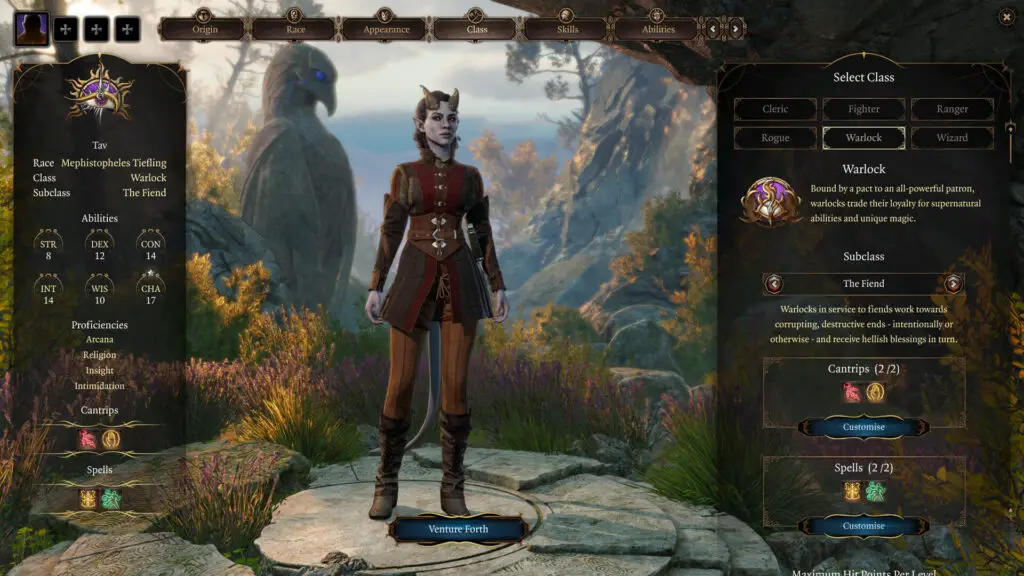
Baldur’s Gate 3 will allow players even to customize their character’s genitals. The ability to customize the avatar’s genitals is not seen as an end in itself but as an additional trait that players can use to create a surprisingly multifaceted identity in the world of Baldur’s Gate 3.
Key points of character creation:
- Character Customization: The game goes beyond simple aesthetic choices, allowing players to create the personality and core of their character. The game reacts to the character combination based on their Race, Background, and Class. This affects available Abilities, Proficiencies, dialogue options, and how the character interacts with different environments and personalities in the game.
- Character Customization Layout Change: The Character Creation page was reorganized to present all needed information about the selections of each step in the creation. This layout makes the early game process more inclusive to players new to the Dungeons & Dragon games.
- New Character Customization Details: Baldur’s Gate 3 offers an in-depth Character Creation and Customization system to allow players to express how they want to portray their characters. This includes unique features found on the character such as Horns and Tails, which are not found on all characters.
- Expanded Character Creation Toolbox: The Character Creation appearances menu includes a large palette of colors and customizability from the hair, eyes, and skin and additional details specific to certain races like horns, tails, and jaw structure.
- Introduction of Dragonborn and Half-Orc: Larian Studios introduced a few new Races to the Baldur’s Gate roster. Players can play as Half-Orc and Dragonborn characters to elevate their fantasy experience.
- Origins in Baldur’s Gate 3 Character Creation: Origins are like pre-made Characters that can be selected during Character Creation if players do not wish to undergo specific Customization options. Each Origin character will have different backgrounds and Classes that will also affect gameplay and interactions.
- Choosing a Race, Background, and Class in BG3: The Best Builds in Baldur’s Gate 3 focus on optimizing Character Creation with the intention of min/maxing, knowing exactly how many Levels each Build can take, and how many Levels of each Class are needed (in the case of Multiclassing).
- Final Character Stats: After going through each of the Character Creation steps, modifying and customizing the character’s appearances and choosing their Race, Class, Subclass, and Background along with each corresponding additional customization menu that appears, the final results are displayed on the right side of the displayed character that has been created.
Races
The game offers various races, some of which are divided into unique subraces with their own perks. The choice of race affects the character’s appearance and abilities. Baldur’s Gate 3 features 11 playable races: Dragonborn, Drow, Dwarf, Elf, Gnome, Githyanki, Half-Elf, Half-Orc, Halfling, Human, and Tiefling.
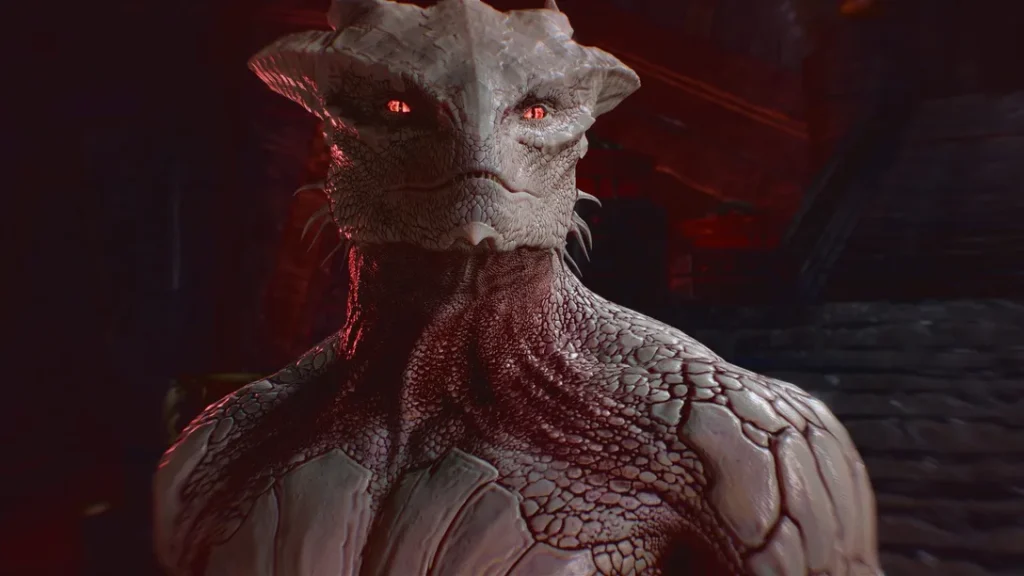
- Dragonborn: Descendants of dragons, they share traits such as breathing destructive elemental energy and gaining resistance to certain attacks.
- Drow: One of the most hated races in Faerûn, they live in dark underground caverns and are divided into two groups due to an ancient feud.
- Dwarf: One of the oldest races in the Forgotten Realms, they are a hardy race with the ability to wield axes and hammers with expert proficiency.
- Elf: Elves are split into two subraces, High Elves and Wood Elves, each with unique traits and abilities.
- Githyanki: A race initially enslaved by the Mind Flayers, they are ruthless pillagers and raiders.
- Gnome: A diverse race with unique traits, they are naturally smart and each subrace has unique traits.
- Half-Elf: They inherit some key characteristics from both human and elven cultures.
- Half-Orc: A mixture of human and orc traits, they are creatures of intense emotion who would rather hit first and ask questions later.
- Halfling: Smaller than the average human but full of heart, they are joyful by nature and tend to avoid the attention of larger creatures.
- Human: The most common people found in the Forgotten Realms and adaptable to any surroundings.
- Tiefling: Known for their cunning and personal allure, they make for inspiring leaders. They may have had evil ancestors who were descended from demons and fiends, but they are not predisposed to evil alignments.
Classes, Sub-Classes & Multiclassing
The game offers 12 major classes and 46 subclasses, each with unique abilities and features. Players can customize their characters by choosing a race, background, and subclass that complement each other. The subclasses provide additional skills and perks unique to each class, allowing players to customize their characters further.
The 12 major classes and sub-classes are the following:
- Cleric: Life Domain, Light Domain, and Trickery Domain subclasses are available. Each offers different spells and abilities related to healing, dispelling darkness, and deception respectively.
- Fighter: Battle Master and Eldritch Knight subclasses are available. Battle Masters focus on tactical superiority, while Eldritch Knights supplement their weaponry with magic.
- Ranger: Beast Master and Hunter subclasses are available. Beast Masters bond with an animal companion, while Hunters excel at slaying dangerous prey.
- Rogue: Thief and Arcane Trickster subclasses are available. Thieves specialize in stealth and larceny, while Arcane Tricksters use illusions and enchantments.
- Warlock: The Fiend and The Great Old One subclasses are available. The Fiend subclass works towards corrupting, destructive ends, while The Great Old One subclass gains strange powers over entropy and the mind.
- Wizard: Abjuration School and Evocation School subclasses are available. Abjuration spells summon wards, banish enemies, and nullify magic, while Evocation spells focus elemental energy into powerful attacks and enchantments.
- Druid: Circle of the Moon and Circle of the Land subclasses are available. Circle of the Moon focuses on the Wild Shape Class Feature, while Circle of the Land focuses on using Nature Magic.
- Barbarian: Berserker and Wildheart subclasses are available. Berserkers see violence as both a means and an end, while Wildhearts are attuned with nature and its beasts.
- Sorcerer: Draconic Bloodline and Wild Magic subclasses are available. Draconic Bloodline is for those with draconic magic in their veins, while Wild Magic comes from ancient forces of chaos.
- Bard: College of Lore and College of Valour subclasses are available. College of Lore focuses on collecting knowledge, while College of Valour focuses on witnessing and relating the deeds of the mighty.
- Paladin: Oath of the Ancients and Oath of Devotion subclasses are available. Oath of the Ancients fights for the sanctity of life and the beauty of nature, while Oath of Devotion acts with honour and virtue to protect the weak.
- Monk: Way of the Open Hand subclass focuses on martial arts, striving for physical and spiritual perfection. Way of Shadow subclass features ninja-like martial art combat, emphasizing stealth and subterfuge. Way of the Four Elements subclass harnesses elemental abilities and spells, allowing the Monk to manipulate the forces of nature.
Each class has a primary statistic that players need to focus on for optimal performance:
- Strength for Fighter, Barbarian, Paladin
- Dexterity for Ranger, Rogue
- Constitution for all classes
- Intelligence for Wizard
- Wisdom for Cleric, Druid
- Charisma for Warlock, Sorcerer, Bard
Larian Studios, have confirmed that the game will allow multiclassing and, for the first time in the series’ history, class respecs. Multiclassing allows players to mix two different classes for the same character to achieve unique combinations. With all this freedom of choice, there’s a risk of making a mess, but fortunately, Baldur’s Gate 3 will allow class respecs.
This means players can ask a certain character to reset the class, allowing them to reinvest the levels they’ve gained. This option was added to allow players to experiment with multiclassing and to prevent them from having to start the game over if they’re not satisfied with how they’ve built their character.
Origin Characters
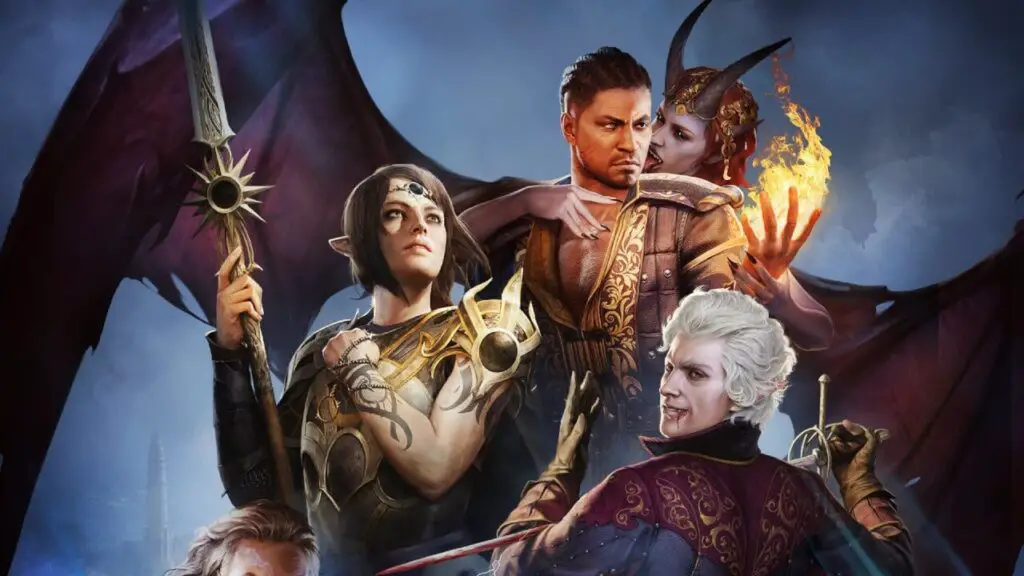
Baldur’s Gate 3 features seven distinct Origin characters, each with their own intriguing narratives that intertwine with the game’s main storyline. Here’s an introduction to each:
- Shadowheart: A faithful cleric of Shar, Shadowheart is a half-elf on a divine mission to return a potent relic to her people. Having willingly erased her own memories for this sacred task, she is tormented by a mysterious and painful magic that she seeks to understand.
- Gale: Once a prodigious wizard, Gale fell from grace when a goddess cursed him, stripping away his magic. Now, he is on a quest to annihilate a perilous artifact within him, all the while grappling with the potential threat he poses to those around him.
- Astarion: A vampire spawn and elven rogue, Astarion has temporarily escaped the clutches of his malevolent master. He is on a path to harness his newfound freedom and increase his power under the light of day.
- Wyll: Known as a legendary monster hunter, Wyll is a human warlock with a clandestine pact he yearns to break free from before the cost becomes unbearable.
- Lae’zel: A formidable warrior and githyanki fighter, Lae’zel is dedicated to eradicating mind flayers. Now, as she faces the threat of becoming one herself, she must prove her worth to rejoin her people and avoid exile.
- Karlach: Having broken free from the archdevil Zariel, Karlach, a tiefling barbarian, is left with an infernal engine within her. She is on a dual mission to repair the internal burning engine and seek vengeance on the individual who sold her.
- The Dark Urge: Living up to its name, The Dark Urge is plagued by an insatiable craving for unimaginable atrocities. This fully customizable character is burdened by amnesia and an internal source of darkness.
The player can control these characters or join the player’s journey as companions. The fate of these characters is determined by the choices made throughout the game.
Baldur’s Gate 3 Gameplay
Baldur’s Gate 3 is an immersive and tactical experience that combines turn-based and real-time action elements. It follows the ruleset of Dungeons & Dragons 5th edition, with each class, race, and origin character providing a unique experience due to their varying skills, abilities, strengths, and weapon sets. The transitions from real-time exploration to turn-based when a combat encounter occurs, allow players to plan their strategy.
Combat System
Larian Studios RPG features a robust combat system that includes standard attacks, casting spells, and interacting with the environment. Spells cover a wide range of offensive, defensive, and utility abilities, and the environment can be interacted with for additional tactical advantages. Players can recruit a party of adventurers, each with unique abilities and combat styles.
The game uses a 20-sided die (D20) system to resolve encounters and scenarios. This includes attack rolls, saving throws, and how spells influence dice rolls. Proficiency bonuses are added to D20 rolls for things characters are proficient in.
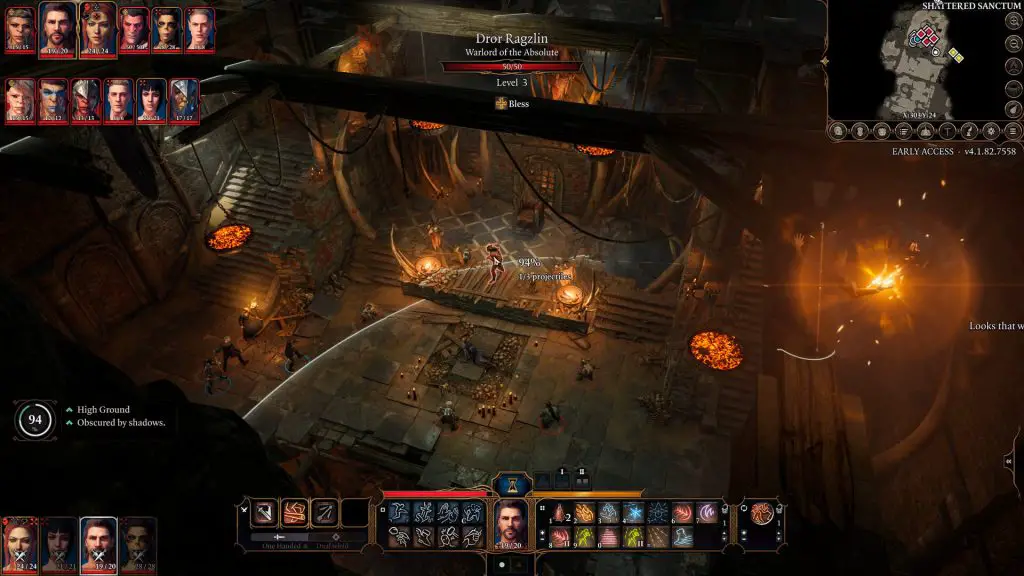
Baldur’s Gate 3 also features weapon and armor mechanics, including Armor Class (AC), weapon proficiency, and damage type. There are also special items like Legendary Items and Dark Urge Specific Items. It recently introduced a comprehensive reaction system to enhance gameplay depth and create more realistic and immersive interactions between characters.
Difficulty level
Baldur’s Gate 3 offers three difficulty modes:
- Balanced Mode (normal mode with a good mix of storytelling and combat)
- Explorer Mode (story mode with easier enemies and more benefits)
- Tactician Mode (hard mode with more challenging combat)
The game also introduces the concept of Companions and Hirelings. Companions are NPCs with their own backgrounds, personalities, and storylines, while Hirelings are independent individuals that can be recruited to assist in quests and battles.
Romances
In Baldur’s Gate 3, players can pursue romantic relationships with seven companions: Astarion, Shadowheart, Gale, Lae’Zel, Wyll, Karlach, and Minthara. The game does not restrict romance based on gender, faction, or race. However, building a positive relationship with the chosen companion is crucial. This can be achieved by performing actions they approve of, helping them with their personal objectives, and making dialogue choices that align with their goals and ideals.
Each companion has unique preferences and can be found in different locations. For instance, Astarion, a vampire, appreciates uncaring, sly, and manipulative behavior, while Gale, found at the Roadside Cliffs waypoint, prefers smart choices, interest in magic and knowledge, and kindness. Lae’Zel values toughness, aggressive decision-making, and chaos, while Shadowheart, who can be found and freed from a pod on the Mind Flayer Nautiloid, prefers peacefulness and conflict avoidance.
The best place to start building a relationship in Baldur’s Gate 3 with a companion is at the Camp, where players can learn more about them. Once a positive opinion is earned, the romance can begin.
How Long Does It Take To Complete?
The highly anticipated role-playing game by Larian Studios, is known for its immersive world and engaging storyline. Released in early access in October 2020, it has been continuously updated and improved based on player feedback. A single playthrough of the early access version of Baldur’s Gate 3 takes about 75 to 100 hours on average.
The exact length of Baldur’s Gate 3 main story is still uncertain. However, Swen Vincke, the founder and director of Larian Studios, claimed in an interview that Baldur’s Gate 3 has about 174 hours worth of cutscenes. Therefore, a die-hard fan who wishes to see everything can expect to spend around 200 hours playing the game.
The total gameplay hours can vary greatly depending on individual playstyles, exploration, side quests, and the level of engagement with the game’s rich world and mechanics.
A staggering amount of never-before-seen content
The game will feature 174 hours of footage, more than double of the entire Game of Thrones TV series, and will contain more dialogue than three times all the novels of The Lord of the Rings combined.
Act 1 of Baldur’s Gate 3, available for a couple of years to all players who purchased early access, has been reworked and expanded by the development team, now featuring about 33% more content. The first version of Act 1 included about 25/30 hours of content, so that players can expect several new features and some big surprises. Moreover, Larian specified that “Act 1 does not even include a quarter of the content present in the full game”, so Acts 2 and 3 will be even longer.
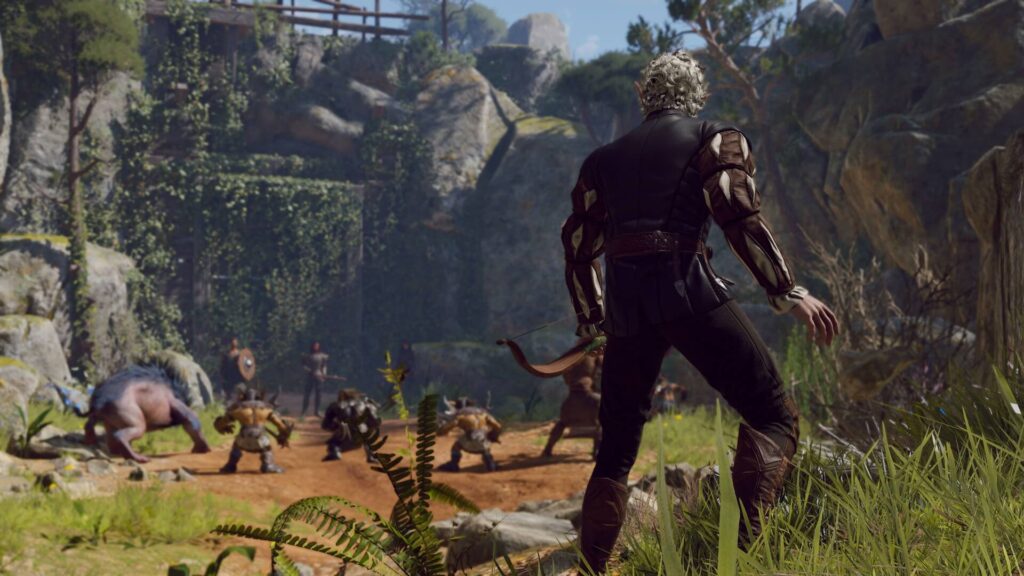
The character editor has been deeply modified and will allow the selection of new origin stories and boast even more customization options at launch. It will also be possible to form an entire party of mercenaries created by the player and experience the adventure with an original team.
The game promises a rich adventure full of choices that will condition the story from the start and an unprecedented number of over 2,000 characters to interact with. Given the amount of content, Larian Studios assures that “players will face a staggering amount of never-before-seen content during their second game, and even during the third”.
How the Multiplayer Works
Baldur’s Gate 3 offers a multiplayer mode that focuses on cooperative gameplay. Players can team up with friends or other players online to embark on co-op adventures, tackle quests together, and strategize as a team to overcome foes.
The game is not an open-world online game, meaning players can choose to play it entirely on their own in a single-player format. However, if they wish, they can play with random players or friends in Baldur’s Gate 3 multiplayer when it comes to online play.
In multiplayer mode, players are not tied together and can move around freely, engaging with objects, creatures, and non-player characters. They can also run back to town and go shopping while the rest of the party continues or go off on a side quest the rest of the group has decided against.
The game also offers split-screen multiplayer, allowing friends to play on one screen. This feature will likely be available with the PlayStation 5 release.
The loot system in Baldur’s Gate 3 multiplayer works such that all loot is party loot, not individual. When an item drops, it is only one item, and not multiple, so everyone can have one. This means the party will have to decide who will receive and use the loot or if they wish to sell it.
Baldur’s Gate 3 PC Specs, Release date & platforms
Baldur’s Gate 3, set in an expansive interpretation of the Dungeons & Dragons universe, is a lavish endeavor that features intricate character models, stunning landscapes, and elaborate visual effects. It requires a powerful PC setup to appreciate its richness fully. With that in mind, the minimum and recommended system requirements are below.
Minimum PC System Requirements:
- Requires a 64-bit processor and operating system
- OS: Windows 10 64-bit
- Processor: Intel I5 4690 / AMD FX 8350
- Memory: 8 GB RAM
- Graphics: Nvidia GTX 970 / RX 480 (4GB+ of VRAM)
- DirectX: Version 11
- Storage: 150 GB available space
Recommended PC System Requirements:
- Requires a 64-bit processor and operating system
- OS: Windows 10 64-bit
- Processor: Intel i7 8700K / AMD r5 3600
- Memory: 16 GB RAM
- Graphics: Nvidia 2060 Super / RX 5700 XT (8GB+ of VRAM)
- DirectX: Version 11
- Storage: 150 GB available space
Baldur’s Gate 3 Release Date and Platforms
After three years of early access, the full version of Baldur’s Gate 3 will finally be available to PC players on August 3, 2023, at 5:00 PM via Steam and GOG with full compatibility with Steam Deck.
Baldur’s Gate 3 will also be available for PS5 starting September 6, 2023. An Xbox Series X|S version is also in the works, but no specific release date has been given. However, Larian Studios hopes to release it by the end of the year.

